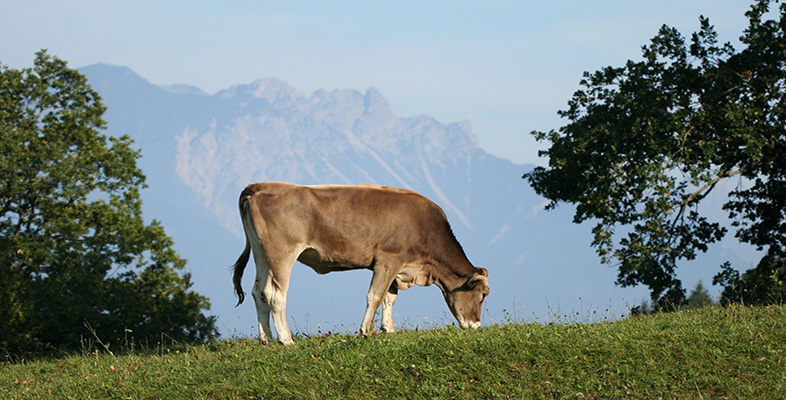4 Digesting plant material
4.1 A brief digression about digestion
There are many new scientific terms introduced in this course. Are you making your own lists of them? If you were to encounter these terms in a fresh context (perhaps on a website, or during your own reading around these subjects), your aim should be not just to recognise the terms, but also to understand their meaning.
You will probably already know from the descriptions on food packaging that the important dietary components are protein, fat and carbohydrate, together with fibre, minerals, vitamins and water. You may already know the importance of the first three listed ingredients as sources of energy and as the constituent 'building blocks' for synthesis. The food that you eat, or that any mammal eats, has to be digested before the nourishment in it can be absorbed from the intestines into the bloodstream. The nourishment is then carried round the body in the blood to wherever it is needed for energy (mainly the muscles) or to where it is required to construct new body tissue or repair or replace worn parts. The process of digestion breaks down the molecules of protein, fat and carbohydrate into their building blocks.
The building blocks of proteins are called amino acids; they are joined together in long strings, which are broken apart when the protein food is digested. The amino acids are then absorbed and recombined inside the cells of the mammal's body in different, but very precisely determined, sequences to make different types of protein, including the 'structural proteins' that any particular species will need for its own muscle, skin, hair, etc. The order of the amino acids in the various proteins of the body is determined by the genes that the individual has inherited from its parents.
Fat is broken down into its two components (glycerol and fatty acids) which are absorbed into the bloodstream, and then may be reconstituted as fat when they reach the storage tissues of the body. Fat is mostly used to provide energy, and can be stored in various locations. If you have worked through course S182_2, you will recall the importance of fat cells (as WAT and BAT) and the role of the latter in arousal from hibernation.
Many carbohydrates are composed of strings of sugar molecules, so when they are digested, sugars are released, which again are primarily used to provide energy.
The process of chemically breaking down proteins, fat and carbohydrates is achieved by the action of enzymes.
SAQ 6
Where in the home might you come across a commercial product that contains enzymes, and what is the function of the enzymes there?
Answer
Biological washing powders contain enzymes, whose function is to break down food and other biological stains on the fabrics being washed. Meat tenderisers also contain enzymes, able partially to break down the proteins contained within the muscle and connective tissue (what we recognise as gristle) of the meat.
The great majority of enzymes are themselves protein molecules whose function is to speed up processes, such as digestion, which without them would go impossibly slowly. Just like the structural proteins mentioned above, enzymes have to be built up using the amino acids obtained from the breakdown of proteins in an animal's diet.
I've already mentioned that cellulose is the structural component of plant cell walls. It is a rather special type of carbohydrate, difficult to digest. In the human diet, cellulose is mostly considered to be 'fibre' or 'roughage', which passes straight through the digestive system, where it is important for the system's correct functioning, but provides no nourishment. Clearly, for a herbivorous mammal that eats only plant material, there must be a way to digest cellulose - and that is the topic of the next section.
